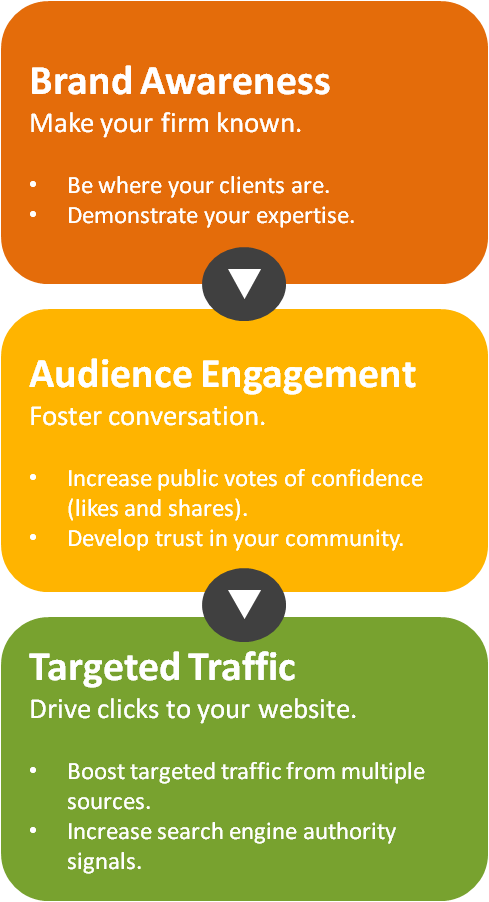You’ve written a thought-provoking, engaging blog post. Now, before you publish your post for the world – and potential clients and word-of-mouth referrers – to see, don’t forget to add tags to help your readers follow the topical trends on your blog.
Tagging is similar to categorizing posts on your blog in that it allows readers to quickly find other posts you have written on the same topics. Think of tags as frequently-mentioned subtopics within a category. Even though tagging is really quite simple, there are many misconceptions out there.
Here are five statements about tagging. Can you tell the true from the false?
1. You should tag as many topics as possible for each post
False. It is best to limit tags to those topics that you have written about in the past or are certain you will write about in the future. Therefore, avoid tagging overly specific terms and one-time events. This will help to avoid “orphan” tags, or tags that are only used once or twice. Two to five tags for each post is recommended, but it’s perfectly fine to have one or none.
Another way to approach tagging is to ask yourself, “what is this post really about?” If the truth is that the post is about 11 distinct and equally important topics, then perhaps it should indeed have 11 tags. On the other hand, blog readers tend to respond better to posts that are more focused, so instead of writing a post that covers a wide variety of topics and tagging it accordingly, consider writing more focused posts that can be clarified or codified with just a few commonsensical tags.
2. Individual tags should be short, to-the-point, unique and separated with a comma
True. Different blogging platforms have different protocols, and new bloggers are often confused about how to separate tags. Within the FindLaw blogging platform, individual tags should always be separated by a comma, not a semi-colon or any other punctuation. Unless you separate terms with a comma and space (e.g., “red, white, blue” not “red; white; blue” or “red/white/blue”), you will likely create extremely long, unbroken and nonsensical tags that will be of no use to your reader.
And remember, it’s also important to capitalize (or not) consistently and to rely on the auto-fill function whenever possible so that duplicate or almost-duplicate tags are not created. Readers will not understand why you have created distinct tags for the same topic, such as Car Accident, car accident, Car Accidents and Car accidents.
Do also try to keep the tags you create to one or two words whenever possible. Although certain topics may seem to require longer phrases as tags (e.g. “failure to diagnose skin cancer” or “division of property in complex estates”), look for opportunities to create simple, high-impact tags by focusing on the most important concept (e.g. “cancer” or “misdiagnosis” or “property division” or “complex estates”).
3. Tags are meant to bolster your SEO
Absolutely false. Tags are simply used as a way for readers to understand what a post is about and to find other posts that are similar in nature. There is no real SEO value in tags, so the main objective is to capture subtopics that readers will find interesting and useful.
Not only will creating SEO-style tags not benefit your search visibility, it can actually turn readers off. If the tags you create and use are obviously intended to “game” the search engines, Web-savvy readers may form a negative impression of the value of your blog.
Remember, your tags are for readers, not search engine robots. So avoid the temptation to tag every post with phrases like “Poughkeepsie divorce lawyer, Poughkeepsie divorce attorney, New York family law firm, child custody lawyer Dutchess County.” Those phrases might very well drive excellent performance on your FirmSite, but they will likely drive smart blog readers away.
4. Tagging is a great way to engage readers
True. Tags can provide a helpful navigational aid for people visiting your blog who are interested in certain topics. Your tagging choices also feed the “tag cloud” – a feature on most blogs that visually represents the tags used most frequently. The tag cloud gives readers an intuitive, “at a glance” sense of what a blog is about. This is another reason to ensure your approach to tagging is commonsensical and based on a desire to help readers navigate your blog.
5. Tags are hard to change, so be careful
False (and true). It is true that bloggers should be deliberate in selecting tags, because tags are important to readers and careless or “tricky” tagging can lead to a negative reader experience. That being said, every blogger realizes at some point that their tagging strategy has gone a bit off course, and having less-than-perfect tags is by no means the end of the world.
If, in reading the above, you have come to the realization that your current approach to tagging should be adjusted, don’t worry. If you find that you have created duplicative, unnecessary or confusing tags, this is very easy to correct.
How? It’s surprisingly simple. From the Write Entry screen in Movable Type, move your mouse over the “Manage” option in the top navigation (the dark blue horizontal bar) and select “Tags” from the drop-down list. You will then be shown an alphabetized list of all the tags you have created.
You can delete any orphan or unnecessary tags by checking the box next to these tags and then clicking the “delete” button at the top of the list. You can also rename any inconsistently capitalized or misspelled tags from the same Manage Tags screen. Simply click on the tag name, correct the spelling or capitalization, and click “rename.” This also works for near-duplicate tags: for example, you can simply rename both the “auto accident” and “Car accidents” tags to “car accident.” Movable Type will ask you if you want to merge all those tags together. Say “yes,” and you will have a much cleaner, more consistent and more easily understandable tagging system.
In conclusion
Hopefully, you now have a better understanding about tags and how to use them to maximum effect. Please see our previous post, Tags: What are they and how do they work? for more information about tagging posts in Moveable Type, including examples and additional suggestions.
As always, if you have a specific question about your FindLaw Blog Services subscription, please contact your Account Manager. If you have general questions about effective blogging practices or suggestions for future training topics, feel free to submit these now.
We thank you for choosing FindLaw for your website, blog and social media solutions.





